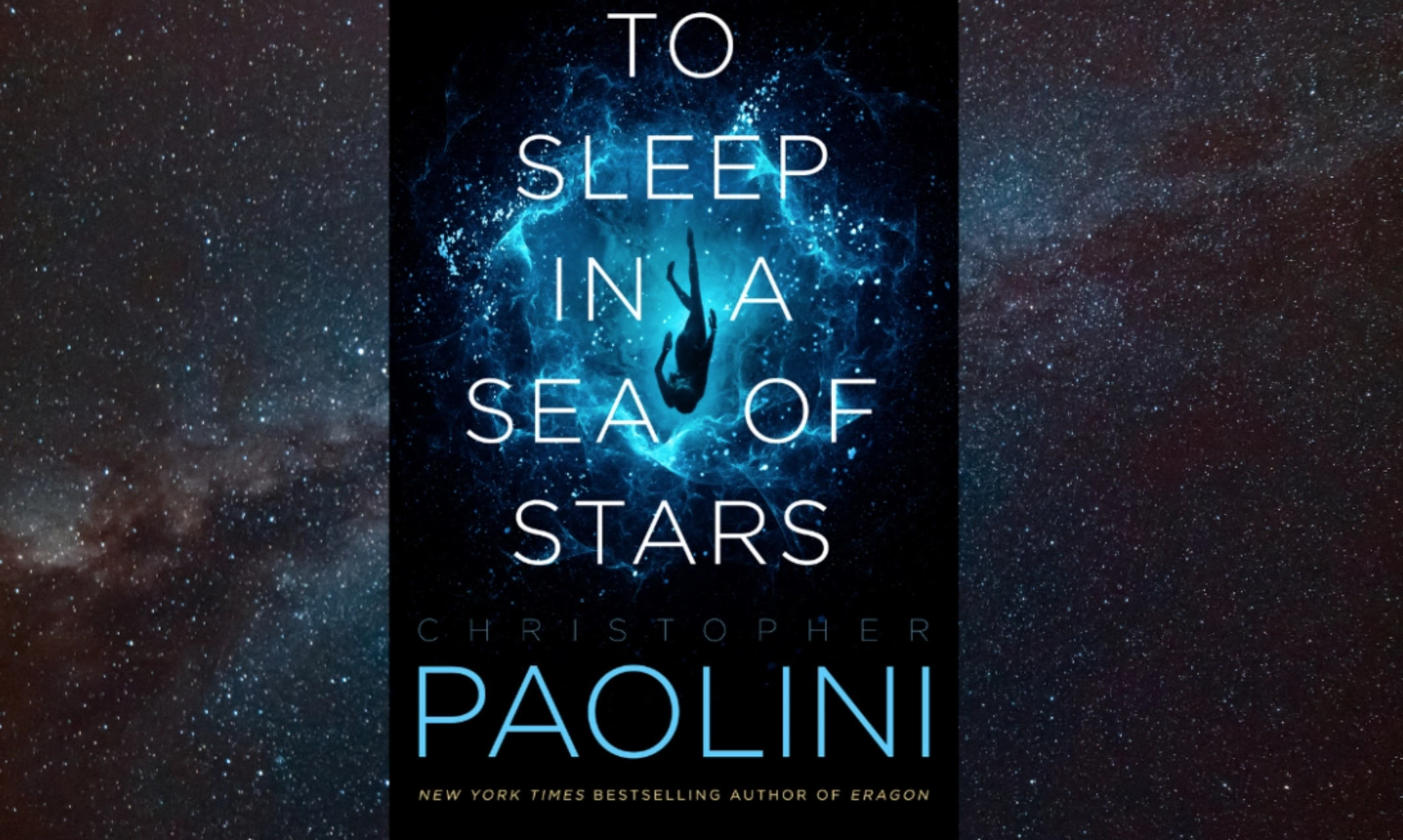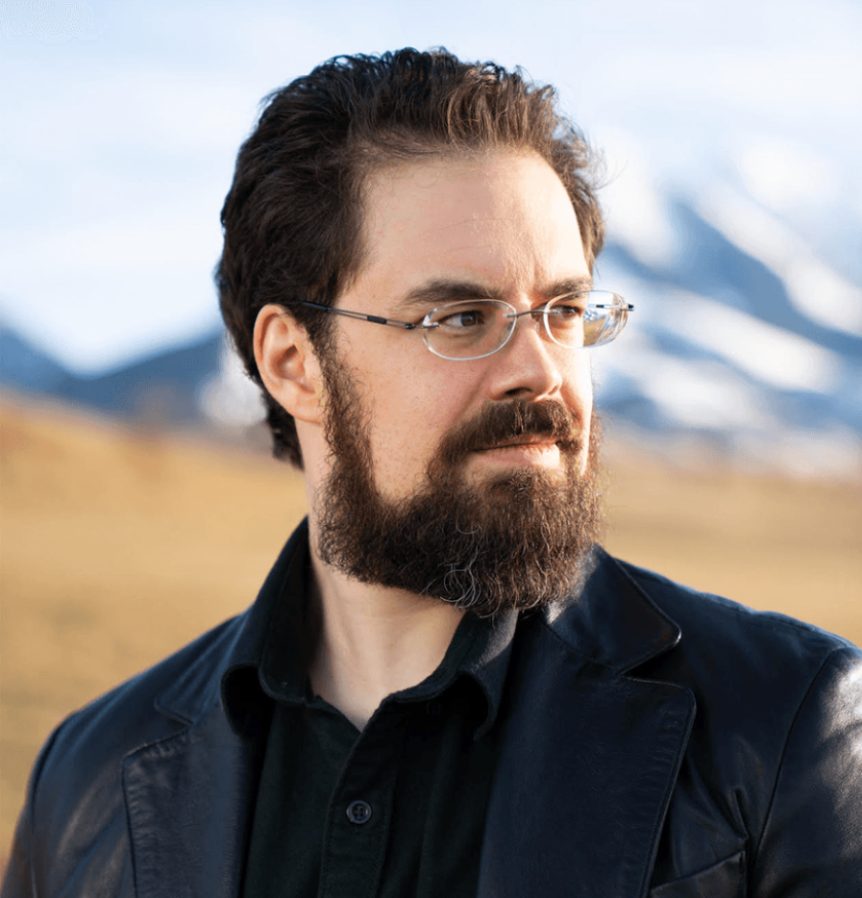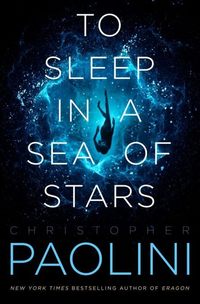
Christopher Paolini, the New York Times bestselling fantasy author of "Eragon," is venturing out of the comforts of Earth's orbit for his first-ever adult science fiction novel, "To Sleep in a Sea of Stars" (Tor Books, 2020).
The Montana-based writer's imaginative work has been published in 53 countries, with "Eragon" and its three sequels, "Eldest," "Brisingr" and "Inheritance" selling more than 35 million copies worldwide.
Now, he's stepped into outer space with a tale of cosmic survival that arrived on Sept. 15 and follows the exploits of xenobiologist Kira Navárez, who's always dreamed of life on new worlds. But during a routine survey mission on an uncolonized planet, Kira discovers a strange alien relic. The elation from her first contact swiftly transforms into nightmarish terror when the ancient dust comes alive. Soon, Kira is drawn into the throes of interstellar war, and with Earth balanced on the brink of annihilation, she just might be humanity's final hope.
Related: Best space and sci-fi books
Last week, Paolini also announced on Twitter that "To Sleep in a Sea Of Stars" has been optioned for a feature film adaptation by Made Up Stories and Snoot Entertainment.
Space.com recently caught up with Paolini to chat about his first sci-fi project, the genesis of this 880-page space-faring epic and what intrepid readers can anticipate as they launch into his new "Fractalverse" novel, which is Paolini’s shared storytelling sandbox where upcoming sci-fi tales will emanate from.
To Sleep in a Sea of Stars by Christopher Paolini. $15 on Amazon
Xenobiologist Kira finds an alien artifact on a barren moon that kicks off a galaxy-spanning adventure of discovery and transformation.
Space.com: What were the origins of your first sci-fi novel and why did you choose this epic story?
Get the Space.com Newsletter
Breaking space news, the latest updates on rocket launches, skywatching events and more!
Christopher Paolini: I grew up reading as much science fiction as fantasy. My dad is an old-school sci-fi fan and he had me watching the original "Star Trek" series and "Star Trek: The Next Generation," "The Prisoner," "Babylon 5," all the good stuff. To me, sci-fi and fantasy are very similar in that they're both speculative fiction and often deal with invented settings, invented social structures, and imaginary physics. Fantasy is often a backward-looking, nostalgic genre, where sci-fi is a very forward-looking genre and I enjoy that.
In the real world, it's important that humanity ultimately gets off planet Earth and establishes settlements elsewhere in the solar system and spreads throughout the Milky Way. For our own survival it's imperative. I'm massively curious about the universe around us. If there were an option to get into a rocket and go start exploring the galaxy I'd do that. I would love to see what's out there. Since that's not possible at the moment, writing about it was the next best option, and that's what drove me to write "To Sleep in a Sea Of Stars."
I'm very optimistic about the future, and yes we face a lot of challenges as a species, but we've accomplished amazing things in the past 30 years and we're doing some fantastic stuff right now. We have SpaceX landing rockets on platforms so yeah! I'm very excited.

Space.com: Can you take us on a quick jet around the plot of your new book?
Paolini: It's a science fiction adventure full of alien planets and spaceships and lasers and heartache and explosions and, of course, tentacles. Biologist Kira Navarez is helping inspect an alien moon in preparation for a human colony. During the survey, she ends up finding something that she shouldn't and her discovery sends the story racing off on this grand adventure.
This is my love letter to sci-fi and I snuck in a lot of references to classic science fiction. I gave myself the luxury of doing that because "To Sleep in a Sea Of Stars" is set in the real world in a setting that I'm calling the Fractalverse. Anything I write that's not explicitly fantasy will be something I write in the Fractalverse from hereon. It encompasses the real world of all known history, the deep past, and far future. It's a big playground for telling lots of different types of stories.
Space.com: Where did your worldbuilding and research process take you on this project?
Paolini: I read a lot of science fiction but I wanted to do certain things with the technology in "To Sleep in a Sea Of Stars," and that was a challenge for me. I did research on how spaceships would work, how warfare could work in zero-G, and where our technology would go in those areas. There's a great website called Atomic Rockets, which has actually been used as a tool by the writers of "The Expanse" and "Mass Effect" and is a great resource for realistic sci-fi in the future.

But the big thing is that I wanted to have faster-than-light travel. And the problem with that is that, according to the math as we know it today, if you travel faster than light you can time-travel and that's not what I wanted. I didn't want to create a future where the most common form of transportation between the stars would also act as a time machine. So the challenge I gave to myself was to find a system of FTL travel that didn't contradict physics as we knew it, hadn't been used by another sci-fi franchise, and didn't allow for time travel.
And that was difficult. I spent an entire year on research and talked with various physicists and scientists. I ended up finding a guy named Greg Meholic, who is a rocket engineer and works in various experimental theoretical physics with some other people. He had a novel view of physics that represented a theory of everything. So I contacted him and he kindly held my hand and he walked me through the implications of the theory. And that's what formed the basis for my FTL section.
All this was background work for the story, which I hope people find interesting and exciting. I actually have a fake scientific paper in the back of the book where I indulge in all the technobabble there.
Space.com: What was your reaction to the evocative cover art for "To Sleep in a Sea Of Stars?"
Paolini: I was very fortunate with this cover. When we started talking about the cover with my publisher, Tor, I wasn't sure what we were going to do. I was extremely fortunate with my earlier novels, the "Eragon" series, to have some iconic, striking covers. There really isn't anything quite like those covers and most people are familiar with them if they've been in the YA fantasy section of bookstores.
So I was wondering if lightning was going to strike twice and Tor was very helpful in finding the best cover for this book. It was designed by a woman named Lindy Martin and I was even more impressed with the job she did because she hadn't read it by the time she did the cover. She did a fantastic job. It really captures the feel of the title and the story itself that I was going for and that's not easy. Since the title of the book is so long, the cover needed to be more typographic versus a painted scene.
It was important to me to present a beautiful package to the readers. We actually have seven pieces of interior art for the book, including gorgeous fractal galaxy end papers and the logo of the Fractalverse is embossed on the cover of the dust jacket. I did some of the art myself and the rest was done by my assistant Immanuela, who is a great artist herself.
Space.com: What wishes do you have for readers who pick up your new sci-fi saga?
Paolini: I poured my heart and soul into this novel. I put my characters through the wringer, but by the end of the book I want to leave people with a feeling of hope, maybe a tingle down their spine, and perhaps a bit of a bittersweet ache that the story has finally reached its conclusion.
Join our Space Forums to keep talking space on the latest missions, night sky and more! And if you have a news tip, correction or comment, let us know at: community@space.com.

Jeff Spry is an award-winning screenwriter and veteran freelance journalist covering TV, movies, video games, books, and comics. His work has appeared at SYFY Wire, Inverse, Collider, Bleeding Cool and elsewhere. Jeff lives in beautiful Bend, Oregon amid the ponderosa pines, classic muscle cars, a crypt of collector horror comics, and two loyal English Setters.










